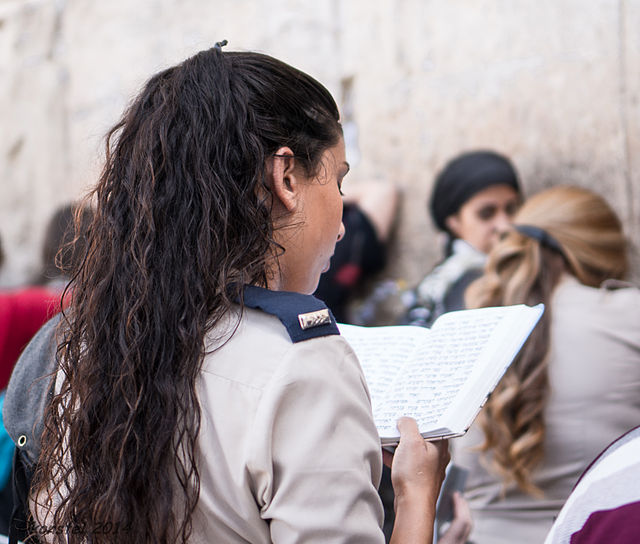Women in Judaism have affected the course of Judaism over millenia. Their role is reflected in the Hebrew Bible, the Oral Law, by custom, and by cultural factors. Although the Hebrew Bible and rabbinic literature present various female role models, religious law treats women in specific ways. According to a 2017 study by the Pew Research Center, women account for 52% of the worldwide Jewish population.
A female IDF soldier-officer praying at the Judaism sacred site of the Western Wall in Jerusalem, Israel
Jewish marriage certificate, dated 1740 (Brooklyn Museum)
Moroccan Jewish women
Girl lights Shabbat candles
Halakha, also transliterated as halacha, halakhah, and halocho, is the collective body of Jewish religious laws that are derived from the Written and Oral Torah. Halakha is based on biblical commandments (mitzvot), subsequent Talmudic and rabbinic laws, and the customs and traditions which were compiled in the many books such as the Shulchan Aruch. Halakha is often translated as "Jewish law", although a more literal translation of it might be "the way to behave" or "the way of walking". The word is derived from the root which means "to behave". Halakha not only guides religious practices and beliefs, it also guides numerous aspects of day-to-day life.
A full set of the Babylonian Talmud
Sefer Torah at Glockengasse Synagogue (museum exhibits), Cologne
Hasidim walk to the synagogue, Rehovot, Israel.
A mixed-gender, egalitarian Conservative service at Robinson's Arch, Western Wall








